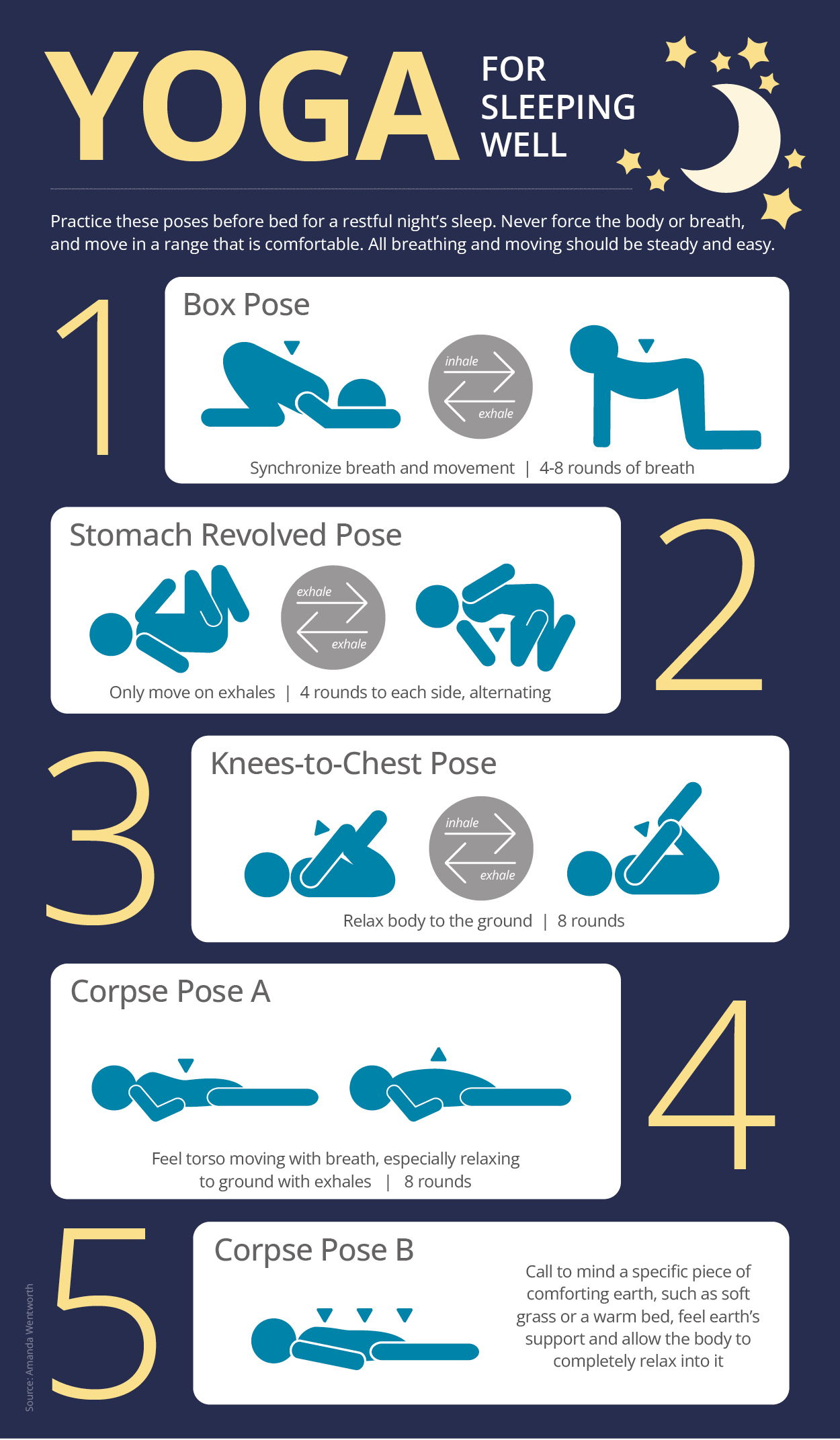This yoga-before-bed routine can help calm your brain to get you relaxed and prepared to sleep.
If it feels like you’re unable to get a good night’s sleep, you’re not alone. According to a United Health Foundation survey, in 2022 nearly 39% of adults in Tennessee reported sleeping less than 7 hours per night.
We offer some help. A yoga routine for sleeping well, and the breathing that accompanies it, can help you relax and get a restful night’s sleep.
The thing to remember with yoga practice is the importance of breathing. Amanda Wentworth, a yoga instructor at the Osher Center for Integrative Health at Vanderbilt University Medical Center, only recommends practicing poses with specific breathing patterns. “Positioning the body in a physical ‘asana’ or pose alone, without the breath, doesn’t have near the effect on the nervous system that combining it with the breath does,” Wentworth explained.
Wentworth recommends the following five poses to help with sleep, which she recommends doing just before bedtime, or in the middle of the night if you wake up.
- Box Pose: Brings gentle extension and flexion to the spine, as well as bringing attention to the feeling the breath moving in the torso.
- Stomach Revolved Pose: A supine (lying on your back) twisting posture that has the body move only during exhales, the passive and relaxing part of breathing.
- Knees to Chest Pose: A supine releasing posture that has the back of the body relaxing into the ground.
- Corpse Pose A: Brings attention to the feeling of the breath in the body and sequences it in a specific way that is best for easy and full breath. Then the exhale is extended so that more time is spent with the passive and relaxing component of breath. Start with four-second inhales and four-second exhales, then add one second to the exhale until you reach eight seconds.
- Corpse Pose B: The mind reflects on a specific comforting piece of earth — any type of earthworks, such as soft grass or a warm bed. Feel its support and allow the body to completely relax into it.
Remember, these poses are meant to be done in a way that is comfortable and easy. Never force the body or the breath, but move within a range that feels good. All breath and movement should be steady and easy.
New to yoga? Not a problem.
“Just start by trying five minutes of simple movement and breathing a day, or even just a deep breath in the car while waiting at a traffic light,” Wentworth says. “Take little steps, and with repetition over time, positive shifts in daily life will occur.”

Want to try integrative medicine?
The Osher Center for Integrative Health at Vanderbilt offers health care designed around your whole health: mind, body and spirit. Integrative medicine uses proven, research-based therapies such as yoga, acupuncture, mind-body counseling and massage that work with traditional medicine to help you achieve better health. Learn more about Osher’s offerings here.





